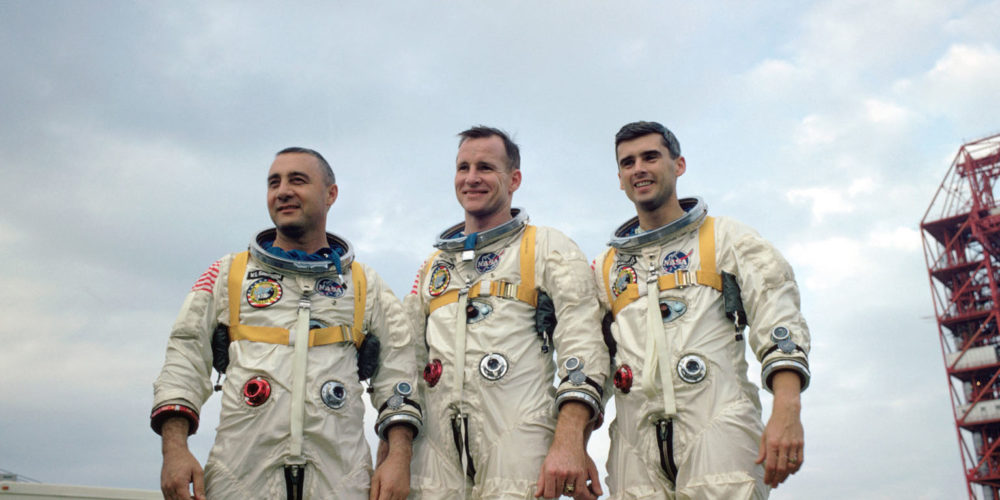In the 1960s, I found myself entrenched in the U.S. effort to send a person to the moon. An employee for North American Aviation (NAA), later NAA Rockwell, a NASA contractor, I was introduced to Project Apollo as a senior spacecraft electronic technician working on the launch escape and earth landing systems at White Sands Missile Range (WSMR), N.M. Later, I transferred to Cape Canaveral, Fla., Kennedy Space Center (KSC), and became the launch team supervisor for Apollo 1.
Jan. 27, 1967
This is still hard for me to write about, to relive it even after all these years, when three men, Virgil “Gus” Grissom, Edward White and Roger Chaffee—America’s best, brightest and bravest—died. In addition, there were several technicians and supervisors, good people, who died of heart attacks and aneurysms. I don’t know why the good Lord did not take me too.
The day started out like most any other with tests being run, and this day the three astronauts were suited up and put in the space capsule. The hatch was installed and oxygen was being supplied to both the suits and the spacecraft. It was to be pressurized to 1 atmosphere, approximately 15 psi above the outside pressure, with pure oxygen. Shortly after this, Gus Grissom started having trouble with his communications with mission control. He became somewhat upset and started to replace his cobra cables, which required him to move around inside the craft. These cables, which supplied oxygen to the spacesuits, also had the communication wiring, plus biomedical monitoring systems. It was shortly after this that all hell broke loose.
A flash fire erupted inside the spacecraft, which simultaneously built up pressure exceeding the structural pressure limit of the craft. It ruptured to the right side as viewed from the hatch looking in. A large ball of fire came out into the white room across the pad leader’s desk and mine. I was not there at the time. Ironically, I was in Cocoa Beach, a few miles south, attending a safety meeting.
My lead men, God love them, escaped to the catwalk; but as soon as humanly possible, they came back in and removed the outer hatch. When the lead men looked in, it was dark—burnt black. They saw no signs of life and told me this. These lead men had on white nylon smocks that were burnt in places, but still they went back to try to save the men inside.
Grant Them Peace
For some reason, I was assigned to head up the technical support team to disassemble the spacecraft after the astronauts’ bodies were removed. The first thing we did was to remove as much of the spacesuits, etc., as we could from the hatch. Then, the three couches were carefully removed, trying not to disturb anything else. This task fell to two of my top mechanical technicians. One of them said he did not think he could go into the burned out spacecraft, as there were some of Chaffee’s suit and body pieces in there still, since the ball of fire passed across his area when it exited the craft like a blowtorch. So I took both of them on a break for coffee and told them if they couldn’t do it, I would have to go in myself, and with my weak stomach there would probably be more to clean up. They went in. Thanks, guys.
Ultimately, the spacecraft was removed from the pad and taken to the pyrotechnic building, an isolated area with limited access. The astronauts’ bodies were taken there also, along with the spacesuits. This area was refrigerated like a morgue and remained that way for quite some time, even after the funerals of the crew members—Grissom, White and Chaffee. My God, grant them peace! What great men!
Editor’s Note: Excerpted from The Life and Times of Gerald W. Zimmerman and reprinted with the author’s permission. A 1958 graduate with an airframe and powerplant (A&P) certificate from the Embry-Riddle School of Aviation in Miami, Fla., Zimmerman completed the A&P program with a 96.7 accumulated GPA, the highest score ever at that time at the school. Update: After publication of this story, Zimmerman died on Sept. 23, 2016. Read his obituary.
